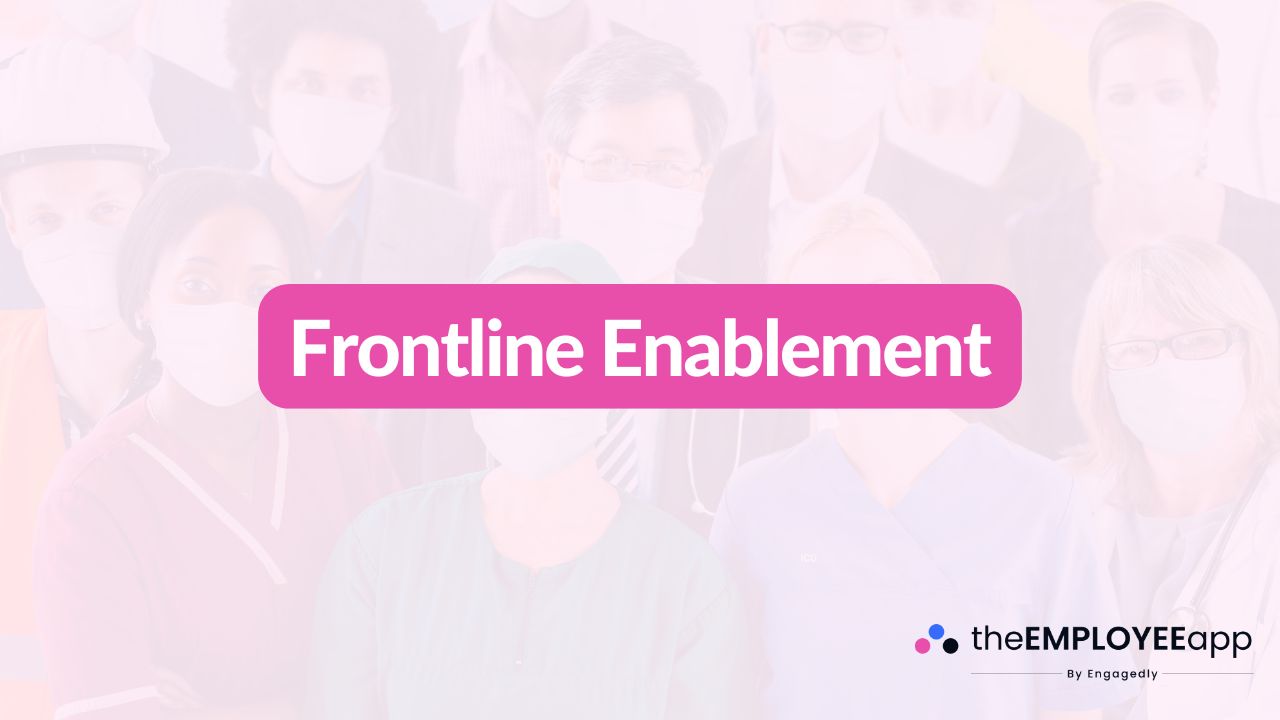
Frontline enablement refers to the strategies, tools, and processes organizations use to empower frontline employees to perform their jobs effectively. These employees are often the direct link between a company and its customers, making their role critical to business success. Frontline enablement ensures workers have access to the right training, resources, technology, and communication to deliver great experiences while staying engaged and productive.
At its core, frontline enablement is about giving frontline workers the support they need to succeed. This includes:
Access to clear communication from leadership
Ongoing training and development opportunities
Tools and technology that streamline workflows
Recognition and feedback that foster engagement
Unlike traditional enablement strategies that often focus on office-based employees, frontline enablement considers the unique challenges faced by retail associates, healthcare staff, hospitality workers, manufacturing employees, and other customer-facing roles.
Frontline employees represent a significant portion of the global workforce. They are the face of the organization for customers and clients, meaning their performance directly impacts customer satisfaction, brand reputation, and business results.
When frontline workers lack resources or feel disconnected from company goals, it can result in low morale, poor productivity, and high turnover. On the other hand, organizations that invest in frontline enablement often see stronger customer experiences, more engaged employees, and higher retention rates.
Communication
Frontline workers need consistent and timely communication from leaders. Mobile-first platforms, team huddles, and feedback channels help keep employees informed and aligned.
Training and Development
Providing easy access to learning content ensures frontline employees can build skills, stay compliant with regulations, and adapt to new processes.
Technology and Tools
Mobile apps, scheduling systems, and digital workflows reduce friction in day-to-day tasks. Technology designed for frontline teams ensures information is accessible wherever employees are.
Recognition and Engagement
Recognition programs and peer-to-peer appreciation boost morale. Engaged employees are more motivated to deliver quality service and stay with the company longer.
Leadership Support
Managers play a key role in frontline enablement by coaching, supporting, and advocating for their teams. Strong leadership helps employees feel valued and connected.
Improved Productivity: With the right tools and processes, frontline employees can perform tasks more efficiently.
Higher Engagement: Workers who feel supported and informed are more engaged and committed.
Reduced Turnover: Frontline enablement addresses one of the biggest challenges—retention—by improving job satisfaction.
Enhanced Customer Experience: When frontline employees are empowered, customers benefit from better service.
Business Agility: Organizations with strong frontline enablement can adapt quickly to changes in market conditions, customer demands, or regulations.
While the benefits are clear, implementing frontline enablement can be complex. Common challenges include:
Limited access to technology for non-desk employees
Inconsistent communication across locations or shifts
Balancing training with employees’ limited time on the floor
Aligning leadership goals with frontline execution
Organizations that overcome these challenges do so by choosing mobile-friendly platforms, creating bite-sized training modules, and establishing consistent communication practices.
Though related, frontline enablement is not the same as employee engagement. Engagement measures an employee’s emotional connection to their work, while enablement focuses on giving employees the tools and resources they need to perform well. Both are important, but enablement often comes first—because employees cannot be engaged if they don’t feel set up for success.
As work environments evolve, frontline enablement will become even more critical. Organizations are shifting to digital-first solutions that allow frontline workers to access everything they need from a mobile device. Additionally, trends like AI-driven training, real-time feedback, and integrated scheduling will continue to shape how companies support their frontline teams.
Forward-thinking businesses recognize that frontline employees are not just part of the workforce—they are the foundation of customer experience and organizational resilience. By investing in frontline enablement, companies can unlock higher performance, retain talent, and create stronger connections with customers.
Frontline enablement is more than a workplace trend—it’s a business necessity. It ensures that employees closest to the customer are equipped, informed, and motivated to deliver results. By prioritizing communication, training, technology, and recognition, organizations can transform their frontline teams into a powerful driver of success.
